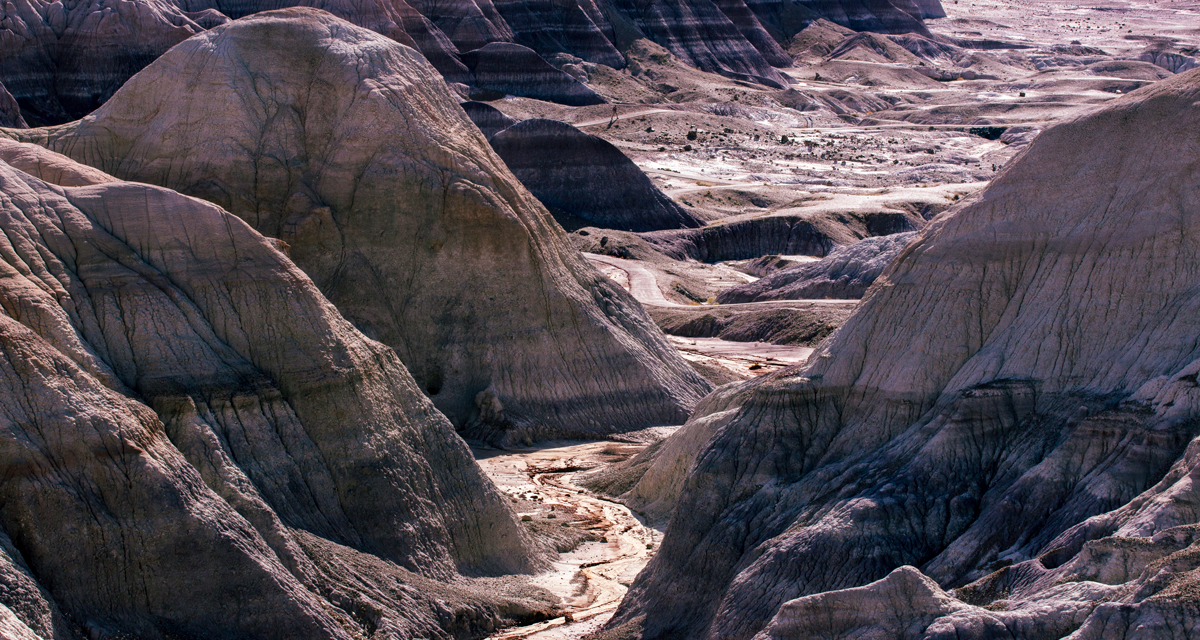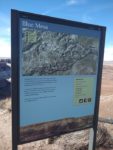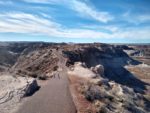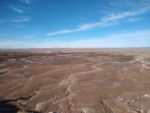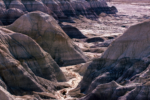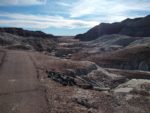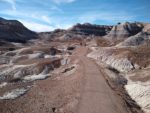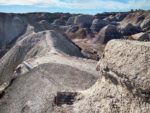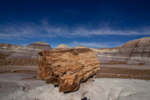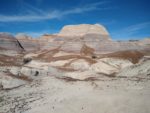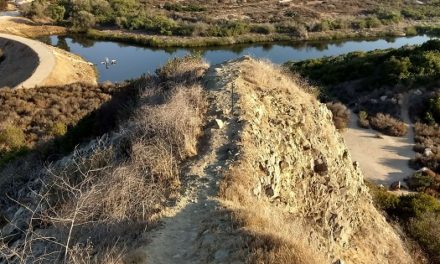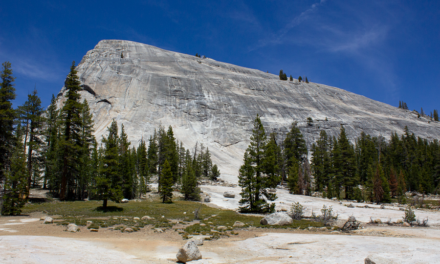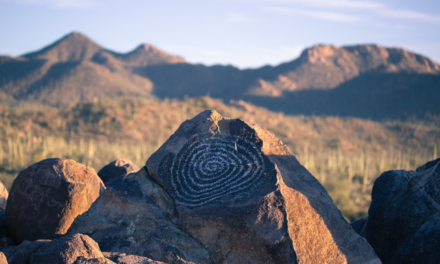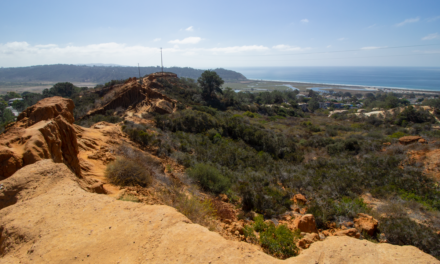Blue Mesa Trail Hiking Guide
The Four Corners region of the United States features some of the most unique landscape in the country. Known as the Colorado Plateau, this region includes several popular national parks. The southeastern edge of the plateau in northern Arizona is home to Petrified Forest National Park. This national park is known for its reptilian and tree fossils as well as a large area of vibrantly colored landscape known as the painted desert.
The Blue Mesa trail is a short hike that features some of the vibrant colors that the Painted Desert has to offer. This short lollipop trail takes hikers from the top of the mesa down to the base of the gray, purple, and white rolling badlands. Views will include scattered petrified wood and rainbow shades of bentonite clay/soil that represent millions of years of geological time.
It is important to note that prior to European exploration and arrival, this region was highly valued by Native Americans for over ten thousand years. The area within Petrified National Forest served as an important trade and migration route for the people’s of the Pueblo, Zuni, and Hopi. Surrounding the park’s borders is the territory of Navajo Nation.
Blue Mesa Trail History
Prior to being the high desert plains and Painted Desert of northern Arizona that it is today, the area was once an immense tropical floodplain. The tropical environment was home to many pre-historic species of amphibians and reptiles during the Triassic period approximately 225 million years ago. The current long logs are a remnant of a large scale flood 200 million years ago.
The Blue Mesa trail doesn’t feature petrified logs as numerous as the park’s southern boundaries on trails such as the Giant Logs trail or the Long Logs and Agate House loop. There are still some to be seen along this trail however. The petrified wood adds a nice contrast to the otherwise barren landscape. The area has also been known for many dinosaur fossil discoveries.
In the flood, prehistoric trees were buried by immense layers of sediment. The logs were buried so deep that oxygen was cut off from the decaying process. Sediment and volcanic ash in the water allowed organic matter to slowly be replaced with a variety of minerals. Today the fossilized trees are mostly made up of quartz and are a reminder of an environment that once was.
On A Personal Note
If you’re looking for a short hike that offers some up close views of the painted desert this hike does not disappoint. Out of the three trails that I’ve hiked in this National Park, this trail was by far my favorite. For those people who enjoy photography, there are some areas along this trail that offer some great perspectives for those with a creative mind.
As a reminder, it is a criminal act to steal any petrified wood, fossils, or Native American artifacts. Please remember to always leave no trace when visiting the outdoors.
Have you hiked this trail recently? Please share any trail updates/pictures in the comments below.
- Overall Difficulty: 20%
- Overall Views: 95%
Blue Mesa Trail Quick Facts:
- Max Elevation: 5536 feet.
- Elevation Gain: 127 feet.
- Estimated Distance: 0.9 miles.
- My Actual Distance: 1.04 miles.
- Estimated Time: 30-90 minutes.
- My Time: 32 minutes moving; 45 minutes total.
Blue Mesa Trail Directions:
Blue Mesa Trail Pictures:
- One of the informational placcards near the trail entrance.
- Some more information regarding the area.
- The short ridgeline before headed down into the badlands.
- Looking to the northwest from the ridge near the trailhead.
- Looking to the south and into the badlands.
- Looking up to the ridgeline from down below.
- The trail is very well maintained.
- Some of the views from within the valley.
- Some petrified logs along the trail.
- Beautiful shades of whites, reds, and grays against the deep blue sky.
Who Blue Mesa Trail Is For:
Advanced Hikers: Although this trail is not long by any means, it’s a great way to get your legs moving if you have just one day to spare in the park. The rainbow colored mesa is a unique sight. I actually recommend this short trail for even advanced hikers just beacause of the unique beauty.
Expert Hikers: This is not a tough trail by any means but let that keep you from enjoying the historical perspective of the trail.
It’s always a good idea to be aware of what type of hiking level you’re at.
Best Time Of Year To Hike Blue Mesa Trail:
As summer nears the temperatures also increase. Between the months of July to September it’s not uncommon for there to be temperatures upwards of 100 degrees. Summer is also the rainy season. The monsoon season kicks into gear starting in late June and tapers off in September. It’s not uncommon for there to be heavy downpours, lightning, and periodic flooding. Most of the park’s rainfall takes place between the months of July to September.
If you hear thunder, it’s not a good idea to be out along the open trail. Instead, seek shelter so that you won’t be the tallest object standing in an open field during a lightning storm.
It’s always a great idea to check the weather before a hike.
Blue Mesa Trail Conditions:
The trail is clearly marked along the way with some informational placards describing the badlands of the area. There is no shade so dress accordingly. There is not enough shelter here so rattlesnakes should not be commonly seen. The soil is too loose for plants so there is no poison ivy along the trail.

